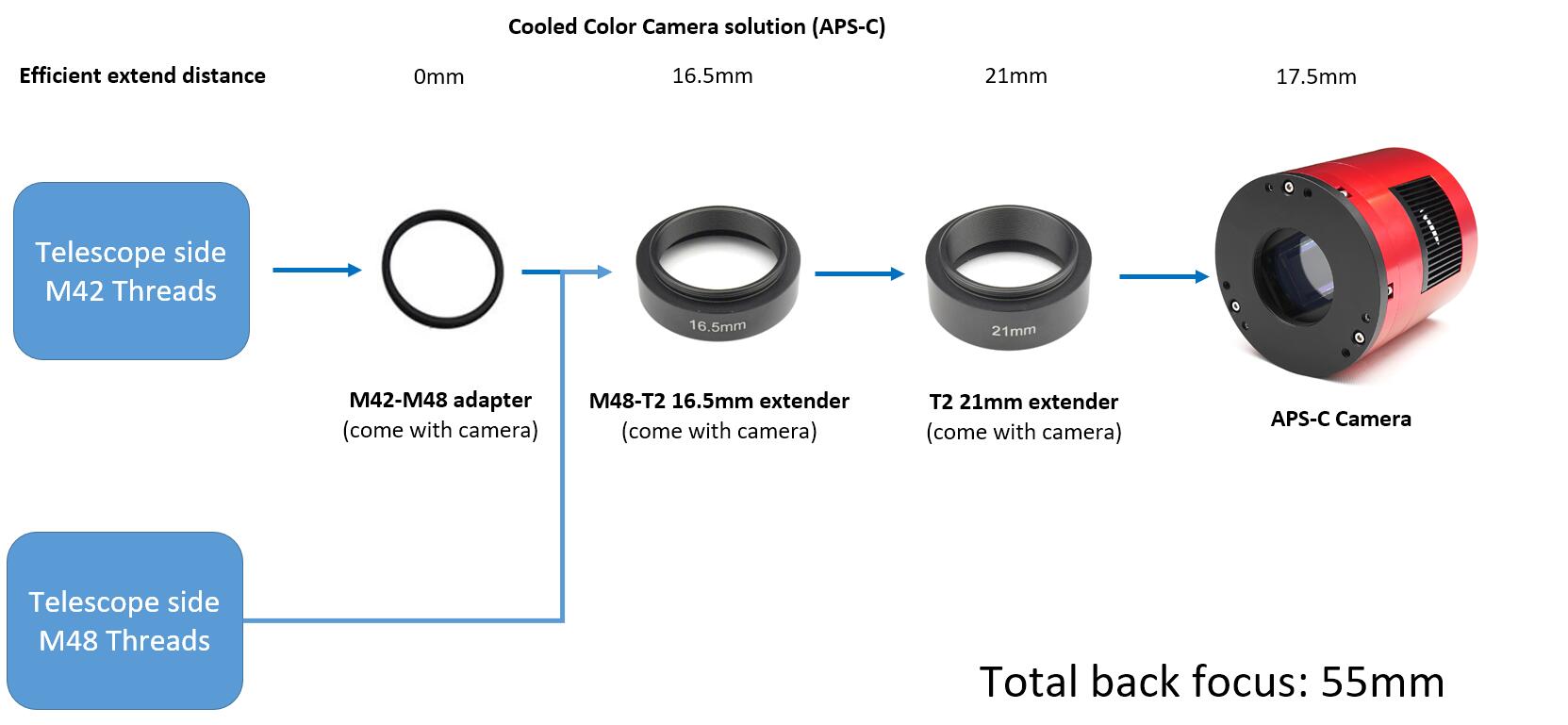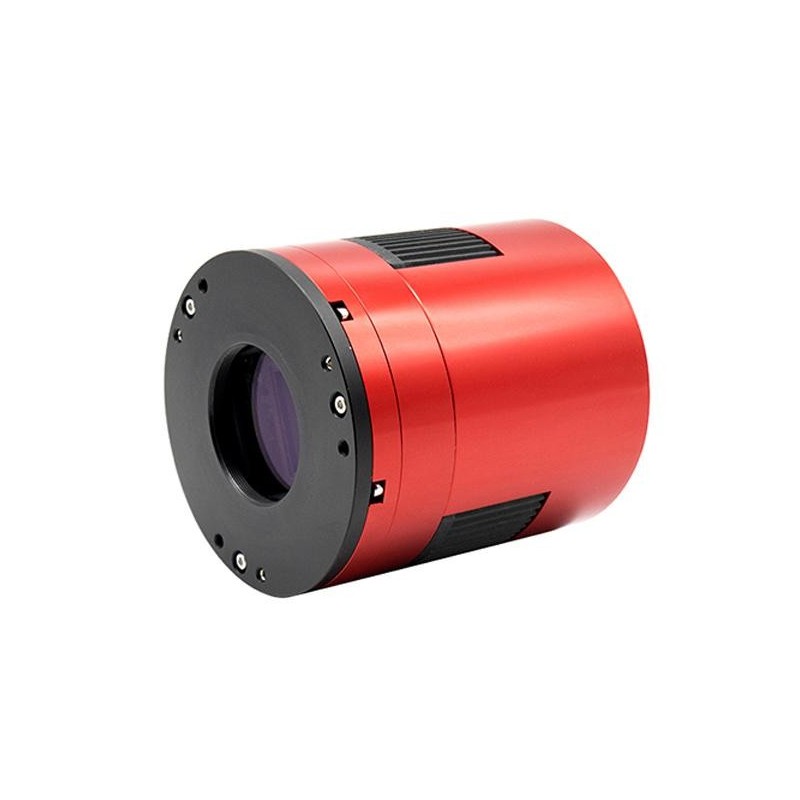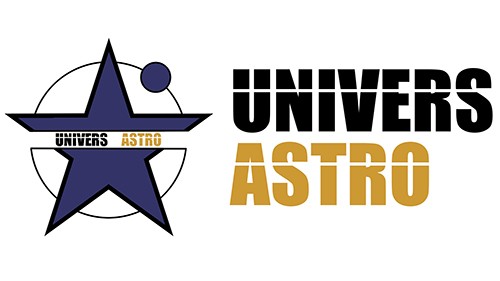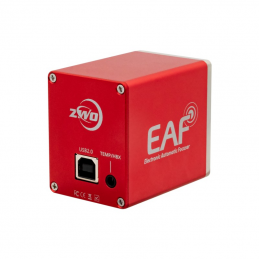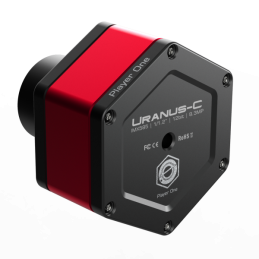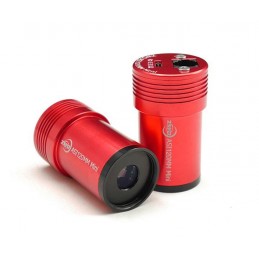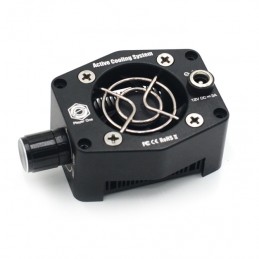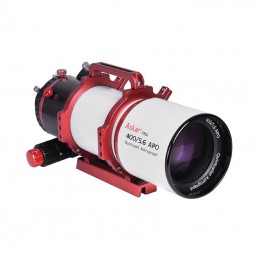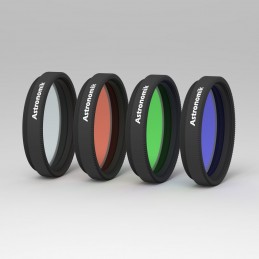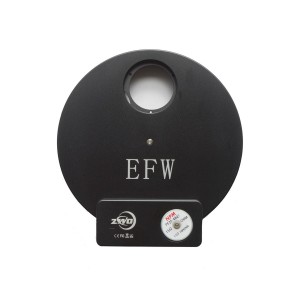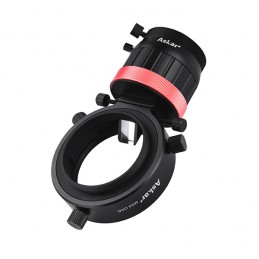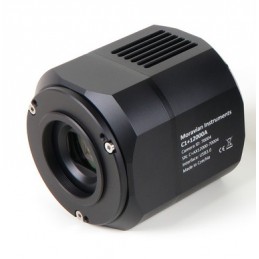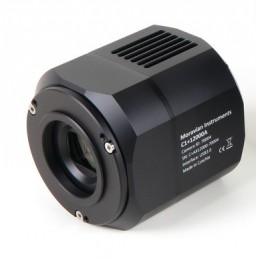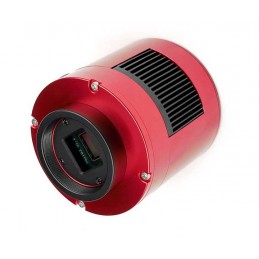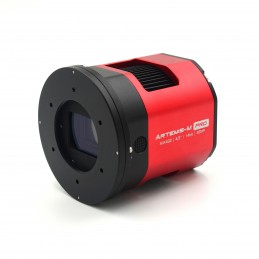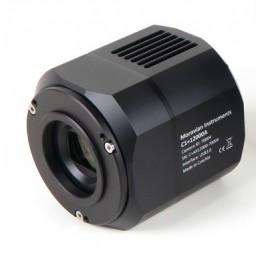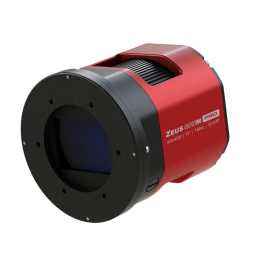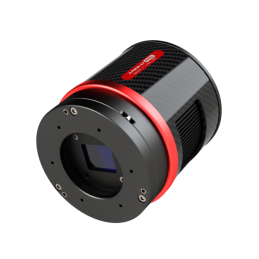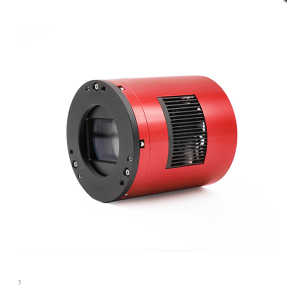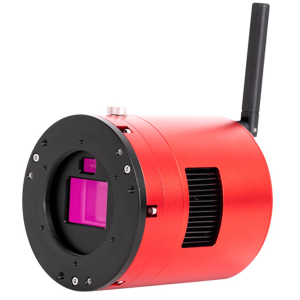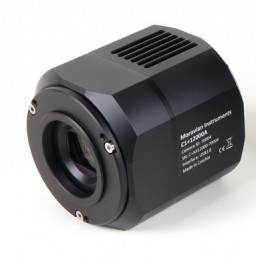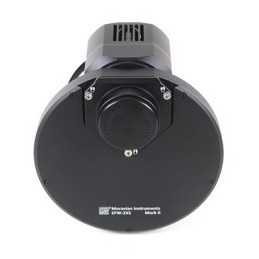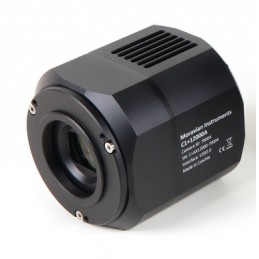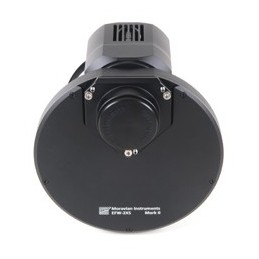ZWO ASI2600MC Pro - powerful latest generation color astro camera
ZWO has taken another step forward with this new camera. The mono sensor in APS-C format convinces with its extremely high sensitivity and 16-bit data depth. Even with longer exposure times, the stars do not saturate. You get much better dynamics.
One of the outstanding features of the ASI 2600MM Pro is its sensitivity. The 80% QE by BACK ILLUMINATION technology and the non-existent amplifier glow make the camera very suitable for all astronomical applications, but especially for deep sky astrophotography.
Other benefits and features of the ASI 2600MC Pro camera:
- USB 3.0 for fast download - can also be used with USB 2.0
- DDR3 buffer memory for stable data transfer with USB2.0
- No amplifier glow!
- Powerful Peltier cooling up to 35°C
- One of Sony's most sensitive CMOS sensors
- High resolution of 3.76µm pixels - ideal for fast telescopes like Apos, Hyperstar, Celestron Faststar, Newtonian telescopes etc.
- Supplied with IR-Cut filter - no problem with refractories.
- 17.5mm back focus
- High sensitivity - QE greater than 80% - ideal astronomy camera for low light objects
- 16-bit ADC: You can achieve depth similar to CCD cameras, but with much higher sensitivity.
Camera application areas
- Deep sky images (nebulae and galaxies): Due to the high sensitivity of the sensor, nebulae and galaxies are imaged after only a few seconds. The camera can be cooled up to 45°C below ambient temperature. This further reduces the already very low noise. By increasing the GAIN (comparable to the ISO setting of DSLR cameras), you can reduce the exposure time to less than 30 seconds for "visual assisted" use. The effects due to air turbulence or inaccuracies in tracking are thus greatly limited.
- Lunar and planetary images: The extremely short exposure times due to the high sensitivity make it possible to "freeze" the air turbulence. Due to the high resolution of the sensor (photosites of only 3.76 microns), you can easily image with your telescope at F/D ratios of 10 to 20. Video astronomy is also possible to show "live" the planets or the Moon on screen
- Solar imaging: with a suitable filter of course, the large surface of the sensor is an undeniable plus for high-resolution images (although the camera is not designed for solar imaging)
Backlight Technology
Sony's back-illuminated CMOS image sensor improves sensitivity and noise reduction. It retained the advantages of CMOS sensors such as low power consumption and high-speed operation.
Backlighting improves light absorption and increases the amount of light at the same time. This allows for considerably shorter exposure times and leads to an improved quantum efficiency of 80%.
Sony has recently developed a unique photodiode structure and built-in lens optimized for back-illuminated structures, which achieve higher sensitivity and lower random noise by reducing noise, dark current and defective pixels compared to conventional front lights.
No amp glow
Traditional CMOS sensors produce a weak infrared light source during operation, which is often seen in the corner of uncalibrated images as the telltale sign of an "amp-glow". Since the ASI533MC Pro uses zero glow circuitry, you won't have to worry about amp glow even when using high gain long exposure imaging.
Anti-fog heating
ASI2600MC Pro comes with the polyimide heater which can avoid any fogging problem.
The anti-fog heater, which adapts completely to the protection window, heats it slightly to avoid condensation problems.
The power of the anti-fog heater is approx. 5 W. It can be disabled in software to save power.
A modular camera
ZWO provides you with a set of rings allowing you to reach a Backfocus of 55 mm easily. This backfocus is often used in astronomy with a wide range of correctors and is a distance to respect if you want round stars. Of course this distance must be checked according to the correctors because it is not always 55mm.
